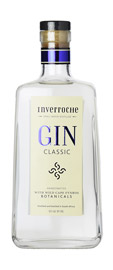A Terroir Unlike Any Other in the World
At K&L, we can get pretty nerdy about terroir, especially when discussing the nuances of fine wine and the subtle expressions that emerge from the vineyard. But rarely does this conversation extend to spirits. That is until recently, when we received a gin from South Africa that is all about its distinctive terroir. Not only does this gin capture a sense of place, but the place that it reflects is so unique and small that it can be argued that no other spirit in the world has a similar profile.
Inverroche, located in Still Bay on the Western Cape of South Africa, uses local botanicals to create the character of their gin. This might not seem particularly impressive since many gin distillers also use this practice. But what sets Inverroche apart are the botanicals themselves, called fynbos, which can only be found in the Cape Floral Kingdom, the smallest and richest of the planet’s six floral kingdoms.
At first glance, fynbos is pretty unimpressive. From afar, it looks like treeless, low scrub blanketing a sparse landscape. But as you get close, tiny plants in an array of textures and colors take form. When you add up the variety of plants, there are well over 9,000 species overall, making it the most diverse biome on the planet (with three times as many plant species as the Amazon rainforest). Lorna Scott, the founder of Inverroche, grew up in Still Bay. About a decade ago, she decided to capture the beauty and diversity of this unique corner of the world. She began working with local botanists to identify potential plants to use in her gin.
Once they narrowed it down to 300 botanicals, Lorna and her son, Rohan, spent three years at their kitchen table experimenting with recipes and methods with their trusty 2-liter copper pot still (which they affectionately named Mini Meg). To craft the gin, they layered the botanicals in steam baskets in the pot still. As the vapor traveled through the helm and into the condenser, it gently extracted the aromatic oils. The result was a complex bouquet of aromatics reflective of these unique plants. Eventually, they landed on three separate recipes, each representing a microregion of fynbos: coastal, mountainous, and limestone rock. Each gin recipe combines 20 to 30 different varieties of fynbos, which are layered with more traditional gin ingredients such as juniper and spices.
Personally, I love gin, and exactly for this reason – that it can be so interesting. For a fresh, light spirit, it has an amazing amount of character that is both subtle and complex, full of herbal, floral and citrus layers. Inverroche delivers this distinctive character in each of their gins, each one wholly unique and expressive of its microregion.
Classic
This gin comes from the limestone rich soils near the distillery. The flavors are fresh, with a grassy juniper quality and fragrant floral notes that develop on the palate. It has a clean, citrus finish. With a distinctive botantical influence, it works well in cocktails. Check out their “Shrub Thyme” cocktail on their website.
Verdant
Made with fynbos from the mountainous region, this gin has a slightly golden-green hue. The nose shows classic juniper, along with delicate notes of chamomile and elderflower. It is satifying and creamy on the palate with a clean, smooth finish. This is my favorite of the three gins to use for a traditional G&T. Our sprits buyer, Andrew, recommends the “Essence” cocktail, which can be found on their site as well.
Amber
The most unique of the three gins, it is named for its amber color, and has a rich, mellow profile. The fynbos used in this gin come from the dunes and coastal areas, yet the character is woodsy with sweet spices. On the nose, delicate juniper aromas mingle with toffee, and continue smooth and complex on the palate. This one will show well on its own or with tonic water.








